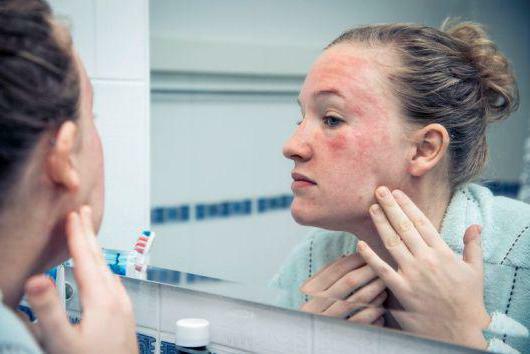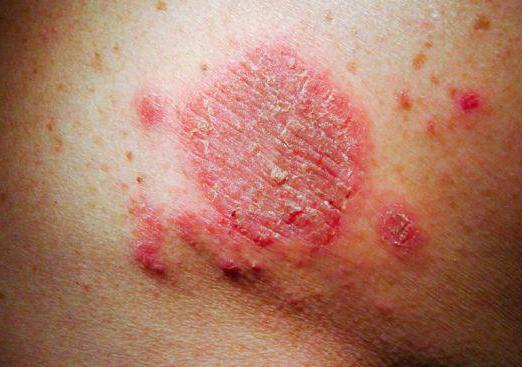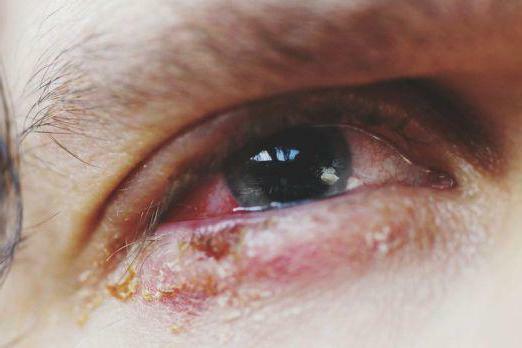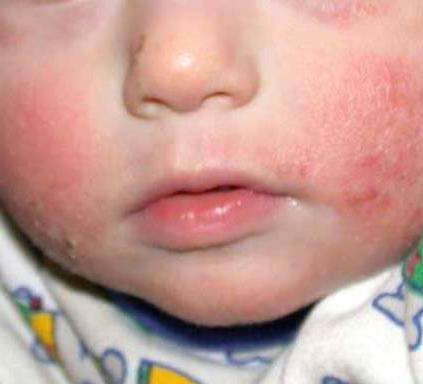Atopic allergy: diagnosis, symptoms, treatment and prevention
According to WHO statistics, in recent years, the dynamics of the growth in the number of patients in whom allergic reactions manifest themselves has been observed in all countries. This is due to inexorable technological progress and its logical consequence - the emergence of industries that use new chemicals and their compounds that are released into the atmosphere, fall into the ground, into food, are present in clothing fabrics. All this contributes to the fact that the allergy strengthens its position, and the number of allergies among both humans and animals is growing steadily.
One of the forms of this disease is atopic allergy. Its main feature is the hereditary predisposition of individuals to the fact that under certain circumstances they will develop allergic reactions. Let us consider this disease in more detail.
Etiology
Some patients are puzzled by the term "atopic allergy".Let us explain what this means. The word "atopic" or "atopic" is formed from the Greek "atopy", which translates as "not like the others, unusual."According to the scientist Kok, who introduced the term, some patients experience unusual functioning of their immune system, which in response to certain stimuli( not toxins, but the most common substances that do not cause any pathological reactions in the majority of people) begins to produce antibodies and someOther specific substances that lead to undesirable reactions in the body.
The scientist observed groups of patients - allergic people, in whom the disease was transmitted in the genus, that is, hereditary. In the future, this treatment of atopic allergy is entrenched, and now means an allergic disease associated with a genetic predisposition to it.
Because genes are what we get from our parents, this disease is overwhelmingly transmitted by inheritance. However, there is a small percentage of patients( about 10%) who did not have allergies in the family, and the development of the disease is associated with a violation of the biochemical processes in the body. 
Mechanism of development of allergic reactions
It may be interesting for some readers to learn how unpleasant reactions of the body to any stimuli arise. A detailed answer to this question can give immunologists. In brief, the atopic allergy in man arises as follows: when molecules of certain substances enter the body, the immune system responds by producing specific antibodies( reactans) that combine with foreign molecules to destroy them. In this process, special receptors are used, which are available on almost all cells of our body.
Receptors are obtained "guilty" in that the combination of antibodies and "aliens" occurs on the surface of the cells, as a result of which the integrity of their membrane is disrupted, and cellular mediators, biologically fairly active substances, are released into the intercellular environment. Specialists call this process pathochemical. The released mediators cause all those unpleasant manifestations of allergy, which are skin rashes, runny nose, sneezing and so on.
Let's add that each of us has an immune system that has individual characteristics, so in some people it starts to react, for example, to the pollen of flowers, and for others to the smell of gasoline. This suggests that each person has allergens.
Risk Groups As mentioned above, atopic allergy is a hereditary form of the disease. Perhaps some still remember from school biology that in organisms of higher forms( human and mammalian) there are so-called allelic genes inherited by couples. Let's say that one of the parents has the "H" gene( does not carry allergic manifestations on anything, the person is not an allergic person), and the other "h"( carries allergic manifestations, the person suffers from allergies to certain certain substances).The child can get such pairs of these genes:
- "NN"( the baby does not have allergies to anything, despite the fact that his mother or father are allergic).
- "Hh"( in such children, the allergy may or may not manifest itself, and unwanted reactions begin only when the children reach maturity).
- "hh"( this pair of genes means that another hundred percent allergic has appeared on the light, and unwanted reactions can manifest itself already in the baby age).
Recall that according to Mendel's law the gene "h" can be inherited not only from the father or mother, but also from other direct relatives.
How to influence the formation of the desired allelic pairs, geneticists do not yet know. 
Allergy and atopic dermatitis - there is a difference or not
To understand if there is a difference between these two ailments, let us recall what dermatitis is. This disease is an inflammation of the skin due to the impact on them of any stimulus. In its role can act:
- chemical substances( detergents, all kinds of solutions);
- parts of plants( leaves, flowers, juice);
- some foodstuffs that a person touched with his hands while cooking;
- cosmetics( creams, lotions and other);
- clothing;
- dust( more precisely, dust mites);
- wool.
Dermatitis manifests mainly locally. Symptomatology includes redness in the areas of contact with the reagent, rashes, itching, erosion, peeling. However, if it is a consequence of food allergy, then it can manifest itself generalized( throughout the body).This disease refers to the group of allergic dermatoses, that is, in fact, is an allergic dermatitis. Atopic he becomes when the patient has a hereditary predisposition to such reactions.
In other words, if someone has a rash on the body on a certain type of soap, and the same reaction to this soap is observed in a child, he is diagnosed with atopic dermatitis. From an allergy what is this condition different? Only by the fact that dermatitis is manifested on the skin, and allergies can affect other body systems. In our particular case, it can be a runny nose, arising from the smell of "unsuitable" soap, hanging in the throat, coughing. Note that any allergy( atopic dermatitis including) - this is not such an innocuous disease, as it may seem. In some cases, it can develop into anaphylactic shock, leading to a fatal outcome. 
Features of the atopic form of the allergy
Hereditary predisposition is not a prerequisite for the appearance of atopic allergy in children and adults. This means that even those who inherited the allelic pair of "hh" genes, the allergy in general can never manifest itself in life if a person avoids contact with an irritating agent. That is, for the onset of an allergic reaction, two conditions must simultaneously be fulfilled: a hereditary predisposition and an irritant.
It is noticed that not always in children the atopic allergy( dermatitis, gastrointestinal or respiratory forms of its manifestation) is manifested by the same agents as the parents who transmitted the gene "h" to them. Why this happens, scientists have not yet accurately established, but for now they make the assumption that the individual characteristics of each organism are to blame.
Another feature of this disease is its cyclicity or dependence on seasons. That is, in a cold time relapses begin, and in a warm disease fades. An important feature is the instantaneous manifestation of allergic reactions in contact with the stimulus.
Scientists have long established that atopic allergy can have three interrelated forms of manifestation - atopic dermatitis, bronchial asthma and pollinosis( rhinoconjunctivitis).This combination of reactions is called the atopic triad and is observed in 34% of patients. In most patients, atopic dermatitis occurs first from the triad.
Classification of
There are several criteria that classify atopic allergy. Treatment should be prescribed depending on which stage or type of ailment is diagnosed.
1. Depending on the phase of flow differentiate the stages:
- initial;
- clearly expressed changes;
- sharp;
- subacute;
- chronic;
- complete remission;
- incomplete remission;
- recovery.
2. Age gradation:
- infant allergy( 0 to 2 years);
- for children( up to 13 years);
- teenage( under 18 years old);
is an adult.
3. Depending on the severity of the manifestation:
- mild;
- medium-heavy;
is heavy. 
Symptoms of
The manifestations of the body's reactions to the stimulus are common( observed with all types of allergen) and specific. Most often, allergic reactions to food( honey, chocolate, citrus fruits, red berries and others) are observed in children.
If it is determined that the irritant is food, a "food allergy" is diagnosed. Atopic dermatitis can manifest itself on the face in the form of redness and on the body in the form of a rash. These skin reactions may not cause the patient any particular inconvenience or vice versa - cause considerable inconvenience - unbearable itching, leading to combs to the blood, peeling of the skin with its thinning, soreness in places of redness. In rare cases, atopic dermatitis is accompanied by fever, lethargy, nausea, vomiting. In medical practice, cases have been reported when food allergy caused anaphylactic shock in patients with subsequent cardiac arrest.
Adults may also experience food allergies. Atopic dermatitis is manifested in the same way as in children. Among the adult population, food allergy often develops in response to ingestion of poor quality alcohol. In these cases, an immediate manifestation of an allergy can be observed, consisting in loss of consciousness of the patient, spasms of the pulmonary system, pallor of the skin. In such cases immediate resuscitation therapy is required to save the patient's life.
Atopic dermatitis in adults often develops after tactile contact with the irritant, which is most often cosmetic and detergent, chemical solutions with which a person works. As a rule, in such cases, the disease manifests itself locally( at points of contact with the allergen).It can be redness, peeling, puffiness, itching, soreness, cracks.
If odors and any substances entering the respiratory system( dust, spores of fungi and mold, pollen) are irritant, the main symptoms in such cases are coughing, tearing, runny nose, dyspnea, pulmonary spasms. Rashes on the skin with this form of allergy are rare.
Allergy in infants
Newborn babies also have various allergic reactions, especially those who have a congenital predisposition to them. Atopic allergy in children up to one year can have such manifestations:
- a rash all over the body or localized;
- redness and swelling of the skin;
- skin peeling;
- stool disorder( color, smell, consistency of stools, the number of acts of defecation increases);
- increased, often unexplained anxiety of the child;
- refusal of food;
- tearfulness;
- capriciousness.
Allergen in young children can be any smell, animal hair, diapers, children's cosmetics, washing powder, poor-quality material raspashonok and diaper. Treatment of infants is based on the exclusion of his contacts with the irritant, on the careful hygiene of the baby( frequent change of diapers, without waiting for them to overfill), on exclusion from the diet of the mother( lactating) products that can cause allergy in her crumbs. In addition, the mother and all those who communicate with the child, should remove the use of cosmetics( creams, perfumes, etc.) that can cause allergies in the child.
Sometimes, neonates are allergic to even mother's breast milk. They can manifest themselves as a digestive tract disorder, dermatitis, and hay fever. If the doctor has accurately established that the irritant is breast milk, despite the fact that the woman has completely excluded from her diet all "dangerous" for the baby food, you should stop breastfeeding and go to the artificial one.
Children's mixture with atopic dermatitis "Nutrilon Pepti Allergy" proved to be very good. Reviews and pediatricians, and parents about her positive. The composition of the mixture contains all the substances necessary for the correct development of the baby, but does not include lactose. In this mixture, the kiddies gain weight well, are active, develop without falling behind the age norms. The only drawback of this product, which is celebrated by parents, is its bitter taste. Therefore, at first it is difficult to get a baby with an appetite to eat this mixture. 
Diagnostics
As can be seen from the above symptoms, atopic allergy is very similar in appearance to other diseases. Thus, signs of a reaction to respiratory system irritants can be mistaken for a cold, and signs of food allergies are for disorders of the digestive tract. To determine that a person has an allergic reaction, and getting rid of it sometimes is not difficult. It is only necessary to remove the source of allergies, so that the state of health again came back to normal. But it also happens that the patient does not know about the allergic reaction, assuming that he has completely different diseases. For example, atopic dermatitis is often taken for eczema, psoriasis, lupus. The doctor for an accurate diagnosis is required to examine the patient and determine the so-called criteria of allergy. They are divided into large and small.
The big, or mandatory criteria include:
- the presence of an allergic in the family;
- chronic course of the disease( with relapses and remissions);
- localization of skin rashes on characteristic areas of the skin( cheeks, neck, inguinal folds, armpits, on the bends of the knees and elbows);
- itching regardless of the extent of the rash.
To small or additional criteria are:
- high level of IgE antibodies in the blood;
- folding of soles and / or palms;
- whitish spots on the face and / or shoulders;
- skin peeling;
- around the eyes presence of dark circles;
- itching with sweating;
- infectious skin diseases that happen too often;
- in children itching and redness of the skin after bathing.
If there are three basic and three additional criteria, atopic dermatitis is diagnosed.
Also, when making a diagnosis, it is possible to carry out skin tests( putative allergens are administered subcutaneously).This test is not 100% correct, as the skin does not react to the stimulus, but the person has allergic reactions, such as a runny nose. In addition, after a skin test, healing ulcers may remain for a long time. 
Treatment of
With atopic allergy, treatment begins with the detection and elimination of the allergen. Without this, no therapeutic measures will help. But getting rid of the stimulus does not always lead to getting rid of allergic reactions, since the atopic form of the allergy is self-sustaining. Therefore, the patient needs to spend a long( 2 months or more) course of complex therapy. It includes:
- according to the indications of antibiotics;
- for atopic dermatitis, external therapy( ointments for relieving itching, painful sensations, peeling, healing of cracks, such as "Betamethasone", "Clobetasol");
- vitamins and immunomodulating drugs;
- antihistamines( Theophylline, Cortisone, Adrenaline, Epinephrine);
- corticosteroids( according to indications);
- membrane stabilizing agents.
Often patients are prescribed drugs that improve the work of the stomach and intestines, as well as regulating and stabilizing the nervous system.
Atopic allergy in dogs, cats and other animals
In cats and dogs - our pets, and other mammals, various allergic reactions are also possible. Their causes may be:
- fleas( the animal's body reacts to saliva and flea excrement);
- food;
- external stimuli( dust, plant pollen, all kinds of smells);
- medicines;
- hygiene products.
The main symptom of atopic allergy in an animal is almost uninterrupted itching. The owner must always pay attention to this pet behavior and show it to the vet. Other manifestations of the disease can be:
- hair loss;
- redness and sour eyes;
- dandruff;
- rash and redness behind the ears;
is an unpleasant odor.
With food allergies( most often when changing food), symptoms may include diarrhea, vomiting, refusal of feed, lethargy and weakness of the animal.
In the veterinary clinic, where you need to contact if there are such symptoms, the doctor will examine the four-legged patient, take swabs from his ears, hold a skin cytology, in some cases can assign a blood test. 
Treatment methods
Treatment of atopic allergies in dogs and cats, as well as in humans, should begin with the determination of the cause and elimination of the allergen. If it's fleas, you should sanitize the place where the animal is, treat the pet against fleas.
If the food allergy is necessary, you must exclude the food or ingredient in the feed, which the pet has an allergic reaction.
If it is found that the animal has a yeast or bacterial infection, prescribe drugs that help fight the pathogenic yeast fungi and bacteria.
Also, the treatment of atopic allergies in cats and dogs involves the administration of antihistamines and vitamins to animals.
Prevention
For both humans and animals, preventive measures include the following:
- avoid contact with the allergen;
- high-quality food;
- strengthening of immunity;
is a complete treatment of primary allergy manifestations.
Doctors believe that it is very important for patients with allergies to lead a healthy, full-fledged lifestyle, avoid stressful situations, and properly organize their daily routine.
